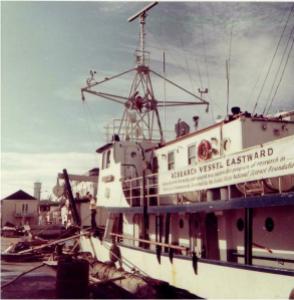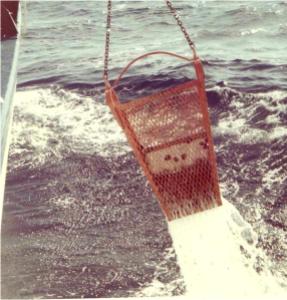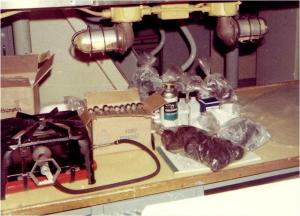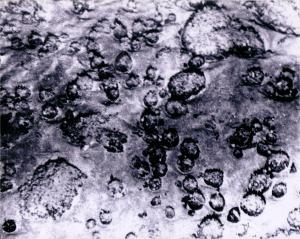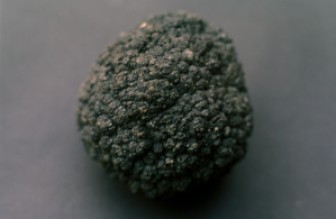It was a coincidence forty years in the making. I was recently at the Scripps Institute of Oceanography, talking to Scripps professor and physician Paul Ponganis about deep diving whales. He told me about the recent discovery that Cuvier’s Beaked Whale, an elusive whale species, had been found to be the deepest diving of all whales.
How deep I asked? One whale dived to 9,816 feet, about 3000 meters. At that depth, water pressure exerts a force of about 4400 pounds per square inch (psi), equal to the weight of a Mercedes E63 sedan pressing on each square inch of the whale’s ample body surface. That is a seriously high pressure, a fact that I knew well since I had once created that much pressure, and more, in a small volume of seawater in a pressure vessel at the Florida State University.
Early in my science career, I published my work on the effect of deep ocean pressure on intertidal bivalves, a mussel (Modiolus demissus) being among them. I found that if you removed the hearts of such molluscs (or mollusks) and suspended them in seawater, they would continue to beat. Furthermore, those excised hearts would beat when subjected to 5000 psi of hydrostatic pressure. As if that wasn’t surprising enough, the slight genetic differences between Atlantic subspecies and Gulf Coast subspecies of mussels resulted in the isolated hearts responding slightly differently to high pressure.


That was a remarkable finding I thought since none of those mussels had ever been exposed to high pressure; ever as in for millions of years. (This study occurred long before the discovery of deep sea vents and the almost miraculous growths of deep sea clams.)
Eventually, my research transitioned from invertebrates to humans. Humans, like intertidal mussels and clams, are not normally exposed to high pressure. But like my unwilling invertebrate test subjects, sometimes humans do get exposed to high pressure, willingly. But not so much of it. Deep sea divers do quite well at 1000 feet seawater (fsw), manage fairly well at 1500 fsw, but don’t fare well at all at 2000 fsw. That depth seems to be the human pressure tolerance limit due to the high pressure nervous syndrome, or HPNS. At those pressures, cell membranes seem to change their physical state, becoming less fluid or “oily” and more solid like wax. Cells don’t work normally when the very membranes surrounding them are altered by pressure.
The Beaked Whale is genetically much more similar to man than are mussels. Therefore, man is far more likely to benefit by learning how Cetaceans like whales tolerate huge pressure changes than we are to benefit from the study of deep diving (albeit forced diving) clams and mussels.
As I talked to Dr. Ponganis it was obvious to him, I suspect, that I was excited about learning more about how these animals function so beautifully at extreme depths. But to do that, you have to collect tissue samples for study and analysis in a laboratory. The only problem is, collecting useful tissue samples from living whales without hurting them may be a bridge too far. Humans rarely even see Beaked Whales, and if the Cetaceans wash up on shore, dead, their tissues have already been degraded by post-mortem decomposition, and are no longer useful for scientific study.
Potentially, here is a job for underwater Cetacean-like robots that when released in a likely Beaked Whale environment, can locate them, dive with them, and perhaps even earn their trust. And when the whale beasts least expect it, those robotic Judases could snatch a little biopsy material.
If only it were that easy.
Considering how difficult it would be to acquire living tissue samples, would it be worth the effort? Well, if man is ever to dive deeper than 1500 to 2000 feet without the protection of submarines, we must learn how from either the mussels or the whales. My bet is on the whales. Unlike mussels, the whales dive deep for a living, to catch their preferred prey, squid and deep sea fish.
What are arguably the first studies of the effects of high pressure on intertidal bivalves (mussels and clams) can be found here and here. Moving up the phylogenetic scale, Yoram Grossman and Joan Kendig published high pressure work on lobster neurons in 1990, and rat brain slices in 1991. I made the leap from mussels to humans by conducting a respiratory study on Navy divers at pressures of 46 atmospheres (1500 feet sea water), published in 1982. For a more recent review of high pressure biology applied to animals and man, see the 2010 book entitled Comparative High Pressure Biology. My theoretical musings about the mathematics of high pressure effects on living cells can be found here.
With time, these studies, and more, will add to our understanding of mammalian pressure tolerance. However, it may well take another generation or two of such scientific effort before we understand how the Beaked Whales make their record-breaking dives, and survive.




